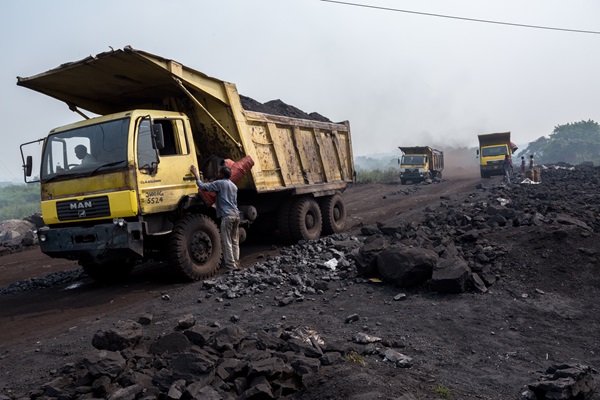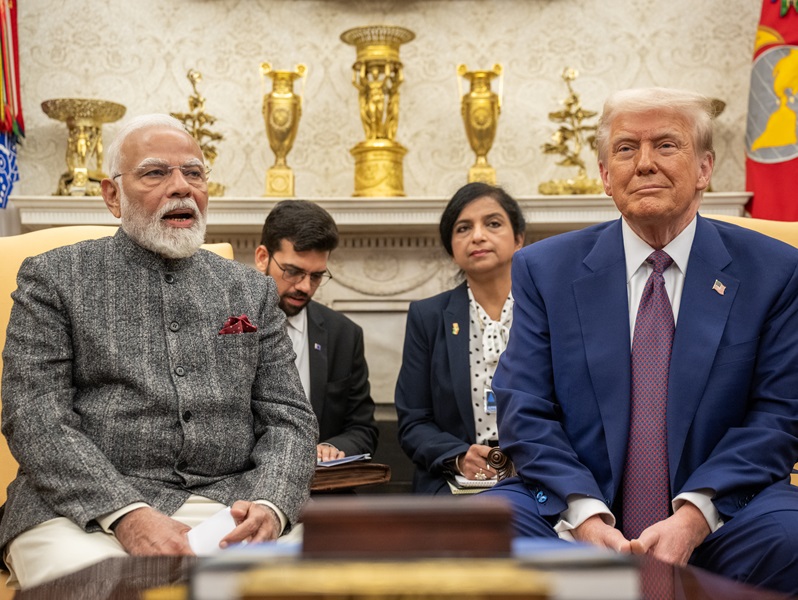.png)

Groupthink is the House View of BasisPoint’s in-house columnists.
July 2, 2025 at 12:55 PM IST
Early signs of a sharp slowdown in industrial activity in June should worry policymakers more than they admit. While the heavy monsoon rains offer a convenient narrative for lower power demand, the depth and breadth of the latest slowdown point to more structural cracks in consumer demand and industrial momentum.
The southwest monsoon, arriving ahead of schedule, was unusually active in June. India received 180 millimetres of rainfall, around 9% above the norm. This cooled temperatures considerably, with the national mean dropping to 29.49 degrees Celsius from 30.55 degrees a year earlier. As a direct consequence, electricity demand fell. Electricity generation contracted 6.4% year on year in June, marking the third consecutive month of decline.
For the April–June period, power generation fell 5.5%, the first quarterly decline since the depths of the COVID-19 crisis in 2020–21. This is not a trivial detail. Electricity demand is one of the best real-time indicators of industrial and commercial activity. Its weakness suggests that beyond the weather effect lies an economy that is simply not firing on all cylinders.
Coal production and offtake echoed the same story. Coal India, the near-monopoly supplier, saw its production drop 8.5% year on year to 57.8 million tonnes in June, while offtake fell 7.4% to 60.4 million tonnes. Given that electricity and coal together account for over 12% of the Index of Industrial Production, this trend all but guarantees a weak IIP print for June, following an already disappointing 1.2% rise in May, the lowest in nine months.
Weakness is not confined to energy. The automotive sector, often a bellwether of consumer sentiment, delivered sobering numbers in June. Passenger vehicle sales among the country’s top four manufacturers fell 6.5% year on year to just over 232,000 units. Importantly, while passenger car sales have been soft for months, the latest data suggest the slowdown is now spreading to utility vehicles, which had been the main driver of growth.
Two-wheeler sales growth also cooled further. Combined domestic sales of major players rose just 3.4% in June, down from 5.4% in May. This points to both urban and rural demand showing signs of strain.
Government revenues mirrored this broader slowdown. After robust growth in the first two months of the financial year, goods and services tax collections lost momentum in June. Year-on-year growth slowed to a 48-month low of 6.2%, with total mop-up at ₹1.85 trillion. Notably, GST collections typically rise sequentially in June, but this time they fell 8.2%, underlining weaker transactional momentum across sectors.
It is tempting for policymakers to attribute these numbers purely to seasonal or weather-related distortions. But rainfall alone cannot explain a slump in car and motorcycle sales, or why GST growth has dropped to its slowest pace in four years. These indicators suggest an economy facing a more entrenched demand weakness that cannot be resolved by simply waiting for the sun to shine.
Admittedly, survey-based indicators such as the Purchasing Managers’ Indices offer a more comforting picture. The Manufacturing PMI rose to a 14-month high of 58.4 in June, while the Services PMI climbed to a 10-month high of 60.7. Yet these are sentiment surveys, not hard output data. They often lag or overstate underlying economic strength, and there is growing divergence between these readings and the on-the-ground indicators.
India’s post-pandemic growth story has been built on hopes of a robust consumption recovery and a new wave of private investment. June’s numbers call that optimism into question. A more serious policy conversation is needed about why consumption appears to be losing steam and how to revive it, instead of complacently blaming the rain. The risk is that in the absence of timely intervention, what looks like a seasonal slowdown now could harden into a more persistent drag on growth.




